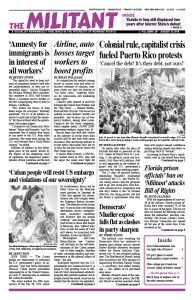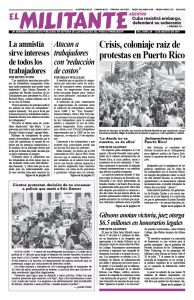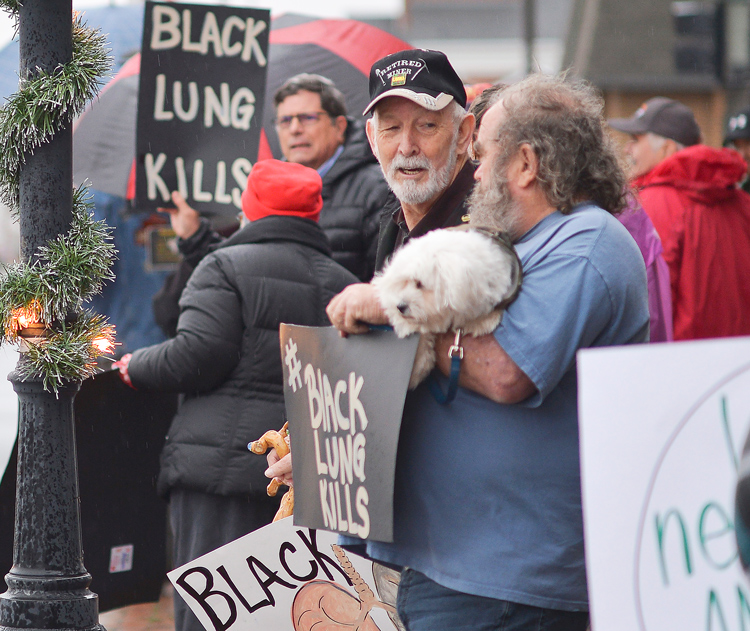Coal miners in the U.S. are facing the biggest rise in the debilitating black lung disease in decades as mine bosses drive to speed up production and reduce the number of unionized mines to maximize their profits. In Appalachia, one in five miners working underground for 25 years or more has black lung, the highest rate in a quarter century.
“There is a Kentucky miner with the disease who is 30 years old waiting for a lung transplant,” Bethel Brock, president of United Mine Workers Local 1405, told the Militant. “For miners in their 40s and 50s the numbers increase massively because of the severity of the disease today.”
Brock, a retired miner, only won black lung benefits himself after a 14-year fight, which lasted through 10 court appeals. He is also president of the Norton chapter of Southwest Virginia Black Lung Association and works with miners, spouses and widows in Harlan and Whitesburg, Kentucky, two of the hot spots of the current epidemic. “The judges have open arms to declare bankruptcy, freeing the coal companies of any liability,” he said.
The most severe form of the incurable disease — progressive massive fibrosis — now inflicts 5% of all miners, the highest rate ever recorded. This is caused not only by coal dust, but silica dust that can damage the lungs faster than dust from coal.
As the big coal seams in Appalachia become depleted, workers are cutting through more waste rock, which is high in silica-bearing quartz and sandstone that lodges in the lungs permanently.
Miners are also working longer hours — the average workweek grew 11 hours in the last 30 years. Danny Smith, who was diagnosed with PMF in his 30s, worked underground for 12 years. For one eight-month stretch he worked six-day weeks, 16 hours a day. “It was just pure rock dust,” he told an NPR program, Jan. 22.
Miners wear respirators and dust masks but the very fine rock particles leak through. Massive amounts of dust are kicked up by continuous mining machines. Bosses refuse to slow down the machines, provide adequate ventilation and water sprays, or move miners to areas with less dust.
Mine and Safety Health Administration data showed bosses exceeded federal silica dust limits at surface mines alone nearly 4,000 times between 1988 and 2016.
The coal bosses resist every step to protect the health of workers, while attacking union organizing on all fronts. By 2017 only about 20 percent of miners worked in union mines. There is not one union mine left in Kentucky.
Brock along with some 150 other miners, many of whom are United Mine Workers members from Appalachia with black lung, attended a Congressional hearing on the disease, July 23. The UMW is demanding the government halt cuts it made to its tax on coal bosses that finances the Black Lung Disability Trust Fund. Some 12,000 miners rely on this fund for medical and cash assistance.
Coal companies going bankrupt claim they are no longer liable to pay into the fund at all. The government now admits that the fund is at risk of insolvency.
The only way to eliminate black lung is to emulate what coal miners did decades ago. Through mighty battles miners carried out a revolution that transformed the UMW in the late 1960s and ’70s. They won a large measure of control over working conditions. Miners set up union safety committees with the power to shut down production — power they used — to enforce safety. Clinics were set up all over Appalachia. Incidents of black lung declined more than 90% from the 1970s to the mid-1990s.
Arlene Rubinstein in Washington, D.C., contributed to this article.


